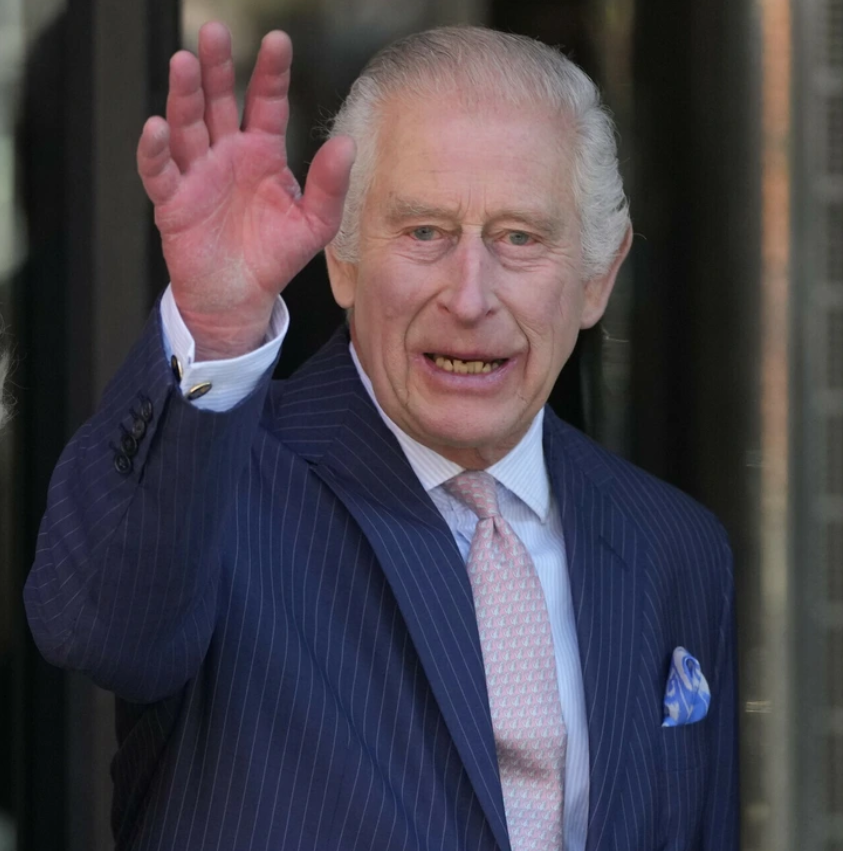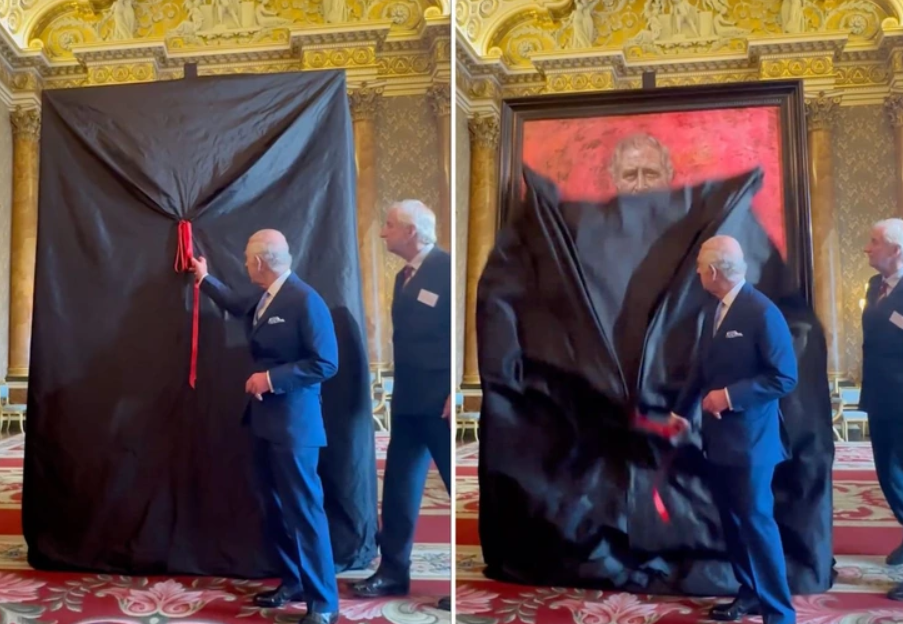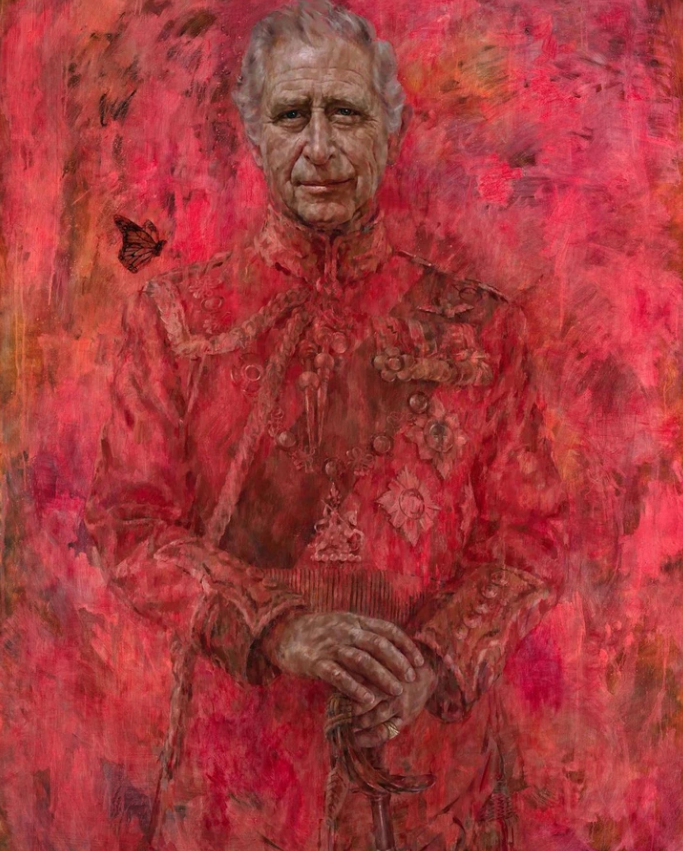In a striking reveal that has left the public and critics buzzing, King Charles III unveiled his first official portrait since ascending to the throne, and reactions have been anything but tepid.
The unveiling

King Charles III recently revealed a new portrait of himself at Buckingham Palace, the first such portrait since his coronation. The Royal Family’s Instagram account shared an exclusive video of the unveiling, featuring the king himself presenting the artwork.
This notable new work will eventually be displayed in Drapers’ Hall in London, adding to its historical art collection and offering the public a glimpse of the monarch’s regal presence.
There was an ongoing debate in the comments.

The unveiling ignited a heated debate in the comments section on the Royal Family’s Instagram post and other social media platforms. Opinions were sharply divided, with some users offering harsh criticism of the artwork. Comments varied from “That is hideous” and “Without sounding rude, this is the worst royal portrait I’ve ever seen” to “100% thought this was satire.”
One critic remarked, “The face is good, the rest is appalling,” while another noted, “I would have loved this if it was any other color than red. He really captured the essence of him in the face, but the harshness of the red doesn’t match the softness of his expression.”
Despite the criticism, there were also expressions of admiration, like “A lovely portrait of King Charles! I love the way the muted background draws attention to his face!” The mixed reactions highlight the polarizing nature of the portrait and the strong emotions it has evoked among the public.
The artist
View this post on Instagram
Jonathan Yeo, a prominent figure in the realm of figurative painting, has garnered widespread praise for his distinctive fusion of conventional and innovative portraiture techniques. Yeo’s distinctive approach involves a deep engagement with his subjects, allowing him to capture their essence beyond mere physical appearance.
His recent portrait of King Charles III epitomizes this philosophy. Yeo explained, “As a portrait artist, you get this unique opportunity to spend time with and get to know a subject, so I wanted to minimize the visual distractions and allow people to connect with the human being underneath.”
The meaning of the portrait.
One particularly notable aspect of Yeo’s portrait is the inclusion of a butterfly, which serves multiple purposes, both symbolic and compositional. Yeo elaborated, “Primarily a symbol of the beauty and precariousness of nature, it highlights the environmental causes the King has championed most of his life and certainly long before they became a mainstream conversation.”
Apart from this, the butterfly provides a visual contrast to the uniform, softening the portrayal and adding layers of meaning. “In the context of art history, a butterfly often symbolizes metamorphosis and rebirth, paralleling the King’s transition from Prince to monarch during the period the portrait was created,” Yeo noted, further emphasizing the transformative phase in King Charles’s life.

Yeo expressed his gratitude and honor for being commissioned to create such a significant portrait. “It was a privilege and pleasure to have been commissioned by The Drapers’ Company to paint this portrait of His Majesty The King, the first to be unveiled since his Coronation.”
Yeo’s approach to portraiture aims at encapsulating the life experiences and humanity etched into his subjects’ faces. “I do my best to capture the life experiences and humanity etched into any individual sitter’s face, and I hope that is what I have achieved in this portrait,” he explained.
While the challenge of portraying a figure as complex and significant as King Charles III was substantial, one that Yeo found immensely rewarding. “To try and capture that for His Majesty The King, who occupies such a unique role, was both a tremendous professional challenge, and one which I thoroughly enjoyed and am immensely grateful for,” he concluded. Destined for Drapers’ Hall in London, the portrait stands as a testament to both the artist’s skill and the monarch’s enduring legacy.

















